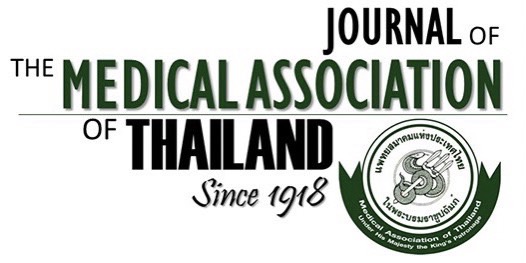Antibacterial Activity of Thai Herbal Plants and Development of Hand Washing Gel Product
Sumalee Kondo PhD*, Pornthep Temrangsee MSc*, Chisanucha Sattaponpan MSc**, Arunporn Itharat PhD***
Affiliation : * Division of Molecular Genetics and Molecular of Biology in Medicine, Department of Preclinical Sciences, Faculty of Medicine, Thammasat University, Pathumthani, Thailand ** Research Administrative Office, Faculty of Medicine, Thammasat University, Pathumthani, Thailand *** Department of Applied Thai Traditional Medicine, Faculty of Medicine, Thammasat University, Pathumthani, Thailand
Background : Multiresistant bacteria have become a major cause of nosocomial infection and serious diseases worldwide.
Antibiotic resistance due to overuse is a factor that causes treatment failure. Several herbal plants have been investigated for
various useful properties such as antimicrobial, anti-inflammatory and antioxidant activities as an alternative to modern
medicine.
Objective : To overcome bacterial multiresistance, development of products from plants with potential antibacterial properties
was conducted.
Material and Method: Bacterial strains including Staphylococcus aureus, Methicillin-resistant Staphylococcus aureus
(MRSA), Escherichia coli, Klebsiella pneumoniae, Pseudomonas aeruginosa and Acinetobactor baumannii, were clinical
isolates collected from Thammasat University Hospital. Crude extracts were taken from the wooden part of Caesalpinia
sappan Linn. and dried flower bud of Syzygium aromaticum (Linn.) Merr. & Perry (clove). The herbal plants extractions were
performed by maceration and decoction. Antibacterial activity was carried out by broth dilution method. The potential
antibacterial extracts were formulated for a hand washing gel. Stability of the product was subsequently tested.
Results : The results revealed that C. sappan Linn. exhibited better antibacterial activity against both Gram-positive and
Gram-negative bacteria as compared to clove extract. The combination of two herbal extracts did not produce an apparent
antibacterial synergistic effect. Minimum inhibitory concentration values of hand washing gel containing C. sappan Linn.
extract alone ranged from 1.25 to 20 mg/ml.
Conclusion : This study identified C. sappan Linn. as a potential herbal plant for development of an alternative treatment of
bacterial infection in the future.
Keywords : Caesalpinia sappan Linn., Multi-resistant bacteria, Antibacterial activity, Herbal product, Hand washing gel



